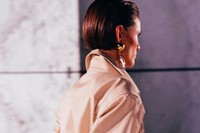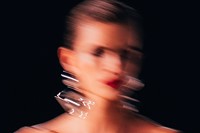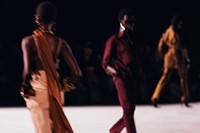After showing his spring Saint Laurent men’s collection in Ludwig Mies van der Rohe’s Neue Nationalgalerie in Berlin, for his women’s counterpart, Anthony Vaccarello did some invention: a Mies building that never was. His name was never mentioned – I suspect it’s difficult to say you’re creating ‘in the style of’ without encountering multiple legal hurdles. It was, however, instantly identifiable as his: the striations of marble, the vast expanses of space, even the open roof – the architecture critic Robin Evans once wrote of Mies’ masterpiece, the Barcelona Pavilion, that its structure appeared not to be lifting its floating roof plane aloft, but rather struggling to hold its lightness down. Here, it lost the fight against a glorious, glowing Parisian sky and the glimmering edifice of the Eiffel Tower.
The notion of a new house built from the codifications of the old and identifiable is a handy parallel to what Vaccarello is doing at Saint Laurent, with collections innately keyed to the spirit of its founder. That is no criticism: Yves Saint Laurent was the greatest fashion designer of the latter half of the 20th century. To say another is not only following in his footsteps but, perhaps, approaching what he achieved through their work is akin to a fashion anointment. But it’s what Vaccarello deserves. Because his shows have that sense of thrill and magic that Yves Saint Laurent, at his very best, managed to muster: a majesty, a precision, and a glorification of women.
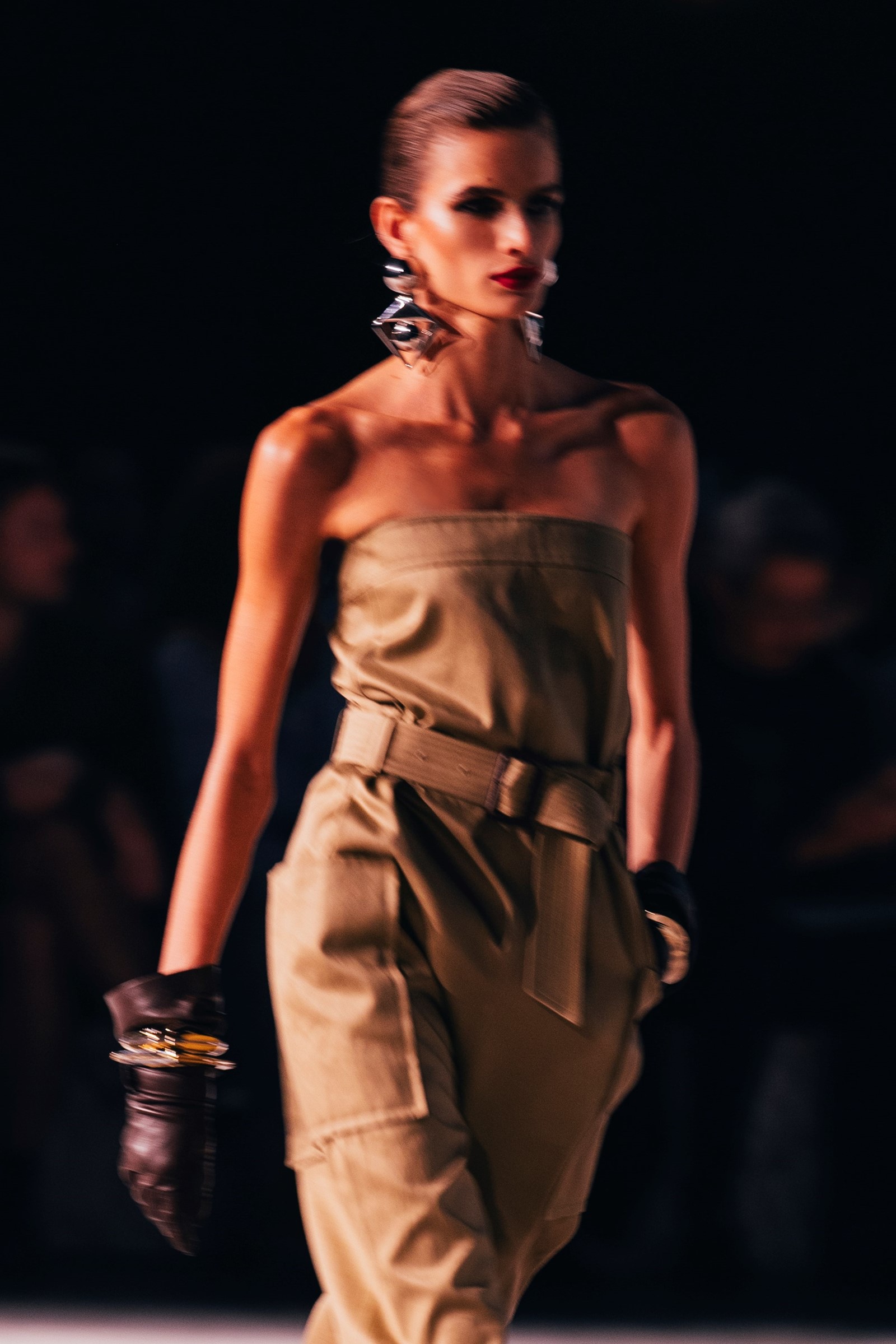
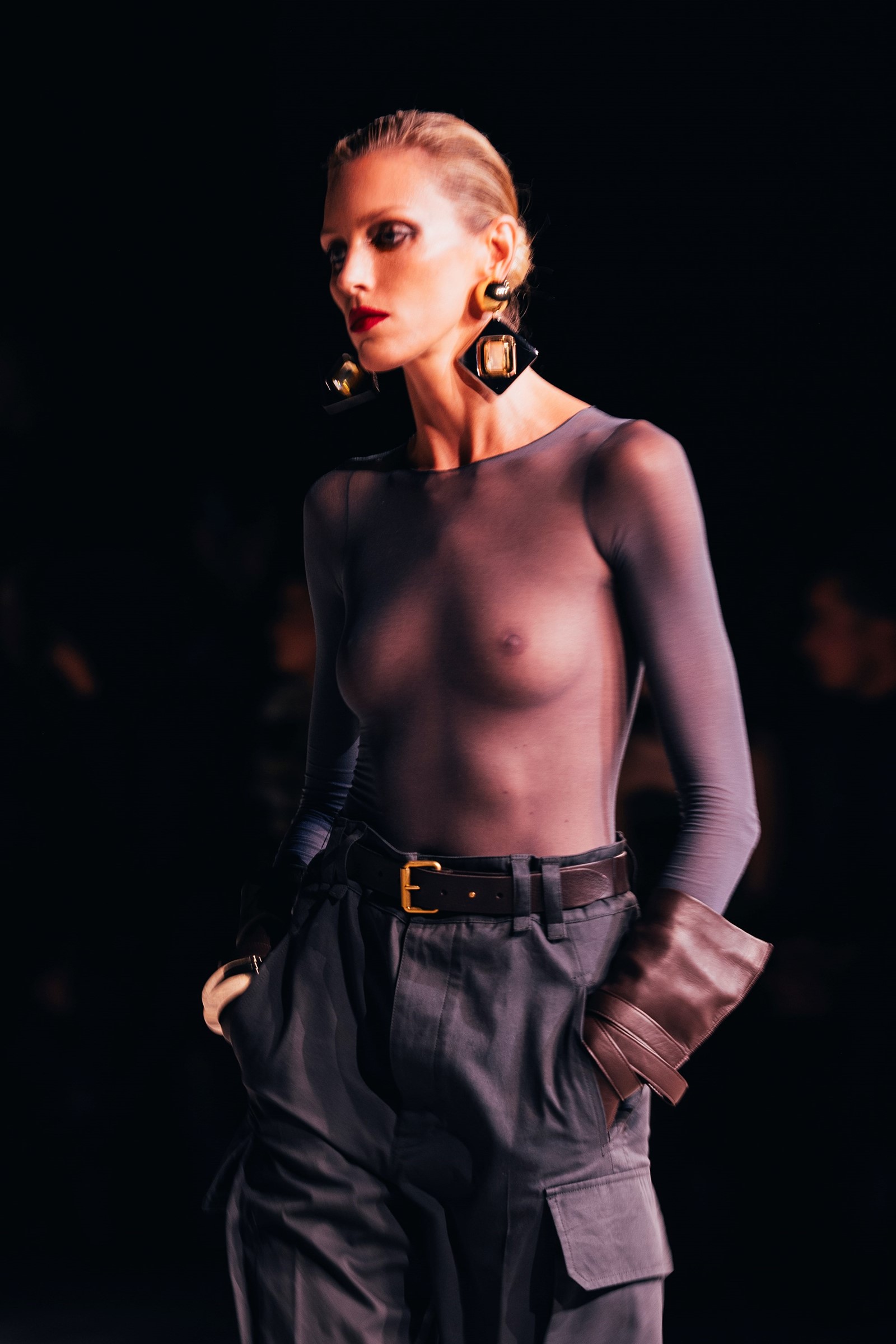
Vaccarello’s latest was an ode, he said, to powerful women: by name he mentioned Amelia Earhart and another lesser-known aviatrix, Adrienne Bolland, also citing women who infiltrated masculine domains like racing-car driving. It was possible to connect their style to the industrial jumpsuits and pragmatic workwear Vaccarello proposed, deluxe up into near-couture versions – which also echoed Saint Laurent’s reworking of sailor’s pea-coats and officer’s trench-coats as hyper-chic feminine attire. Yet, as with the structure surrounding them, you really didn’t need names to anchor these garments, or to underscore the intention. It was obvious that this show continued a narrative of power-dressing Vaccarello explored in his Autumn/Winter show – one which seems to have already had a significant and powerful impact across fashion, judging by the presence of jutting shoulders following his forceful lines.
Back in 2017, I interviewed Pierre Bergé, the eminence gris of the house of YSL. He was gruff, with a wasp-chewing bulldog face. I fell deeply, madly in love with him and with his passion for the house, which had been his whole life. “I do not expect a fashion designer to imitate Saint Laurent,” he told me, sternly. Vaccarello does not. Indeed, what is interesting is how he is able to draw a line from the Saint Laurent archives today without it feeling retro, or nostalgic. There is no pastiche. In a sense, that succeeded where even Monsieur Saint Laurent himself failed: in the late 1990s, Saint Laurent had fallen into ceaseless self-reference, what he termed as “the perfection of my style”, but a style that often did not key to the demands or evolutions of modern fashion. There were flashes of brilliance, but the flame didn’t burn brightly. Vaccarello’s keen eye means his his reverence for Saint Laurent is combined with relevance for a modern woman, and a modern wardrobe. This collection riffed on the saharienne, the safari jacket Saint Laurent introduced in the 1960s and explored for the next 30 years. It also included easy dresses, unbuttoned at the breast for a frisson of eroticism, all in utilitarian cottons and cool linens.
Back to Bergé. “He loved what you could connect the most to Yves Saint Laurent,” Vaccarello told me, of the reaction of that notoriously fiery co-founder of the fashion house to his debut. He would have loved this, then, keyed as it was to Saint Laurent – but deeper than fabric. This collection was an ode to Saint Laurent’s way of seeing, to his view of women as figures of power, fusing elegance with practicality, fashion with freedom. And, plainly put, the last few glorious exits, of ruffled mousseline de soie evening dresses in shades of tobacco, cocoa and black, were some of the most beautiful evening wear we have seen in the past decade. And isn’t beauty, plainly and honestly, rinsed of sneering irony, what Saint Laurent was all about? And now, is all about?

